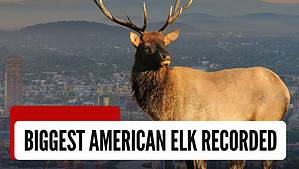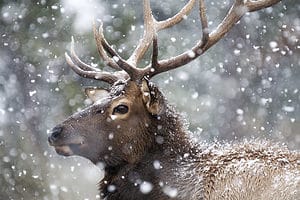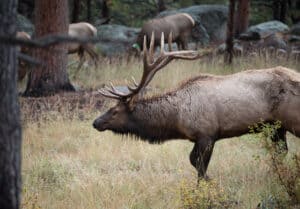The subspecies Cervus elaphus canadensis, better known as elk, is the most populous and developed member of the red deer (Cervus elaphus) genus. Elk are found in North America. These animals make their homes in the high, rugged mountains of both Central Asia and North America. They are also referred to as wapiti. It belongs to the Cervidae family, also known as the “deer” family (the order Artiodactyla).
Herbivores that inhabit woodlands and the edges of forests include elk. The enormous antlers that bull elk wear are shed every year. During the rut, males demonstrate their dominance over females by engaging in ritualized behaviors. these behaviors include posturing, antler wrestling (sparring), and bugling. These behaviors are intended to attract potential mates.
During the late Pleistocene and early Holocene, elk populations originally from Asia and Western Europe settled in southern Sweden and the Alps. Mexico was part of the former range of the Merriam’s elk, which has now been extinct. Elk populations have flourished all throughout the world, including in New Zealand and Argentina. However, because of its adaptability, it may represent a threat to the ecosystems and animals that are native to the area.
In the following paragraphs, we will investigate the elk population. Discover how many are still alive across the globe. Let’s go!
What Is the Current Population Size of Elk Around the World?
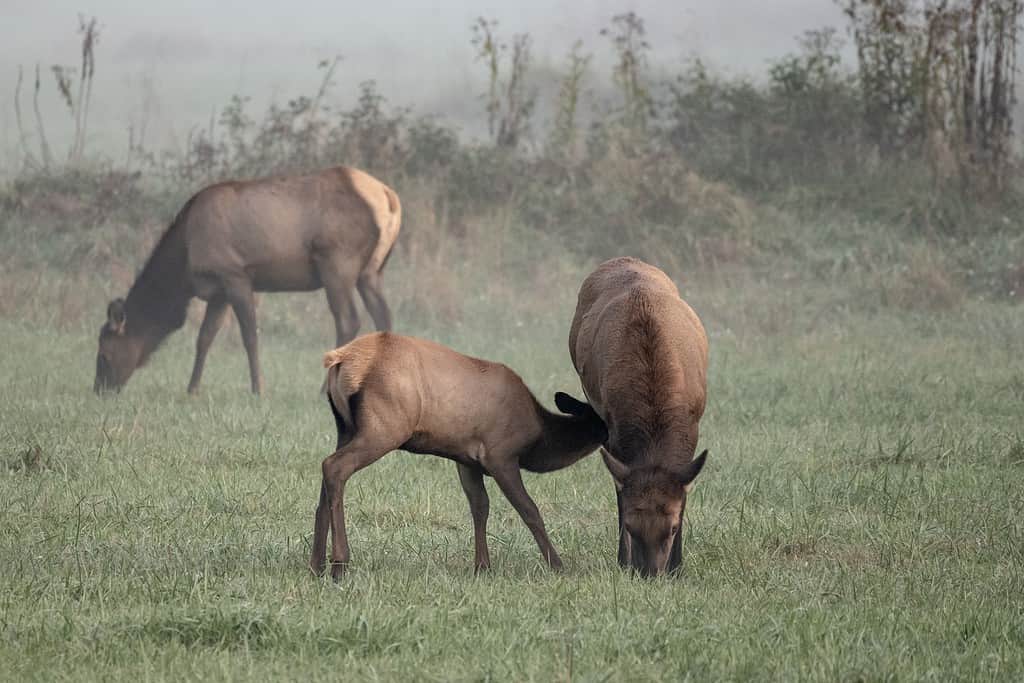
More than a million elk roam the planet.
©Kelly vanDellen/Shutterstock.com
In total, there are over one million elk in the world. Elk can be found in the wilds of the western United States, including the states of:
- Arkansas
- Kentucky
- Michigan
- Minnesota
- Missouri
- North Carolina
- Pennsylvania
- Tennessee
- Virginia
- West Virginia
- Wisconsin
They are also located in seven provinces in Canada, including Saskatchewan.
Is There a Dangerous Decline in the Elk Population?

Elks are not on the IUCN Red List since their number is growing and they can thrive in many habitats.
©Cody Linde/Shutterstock.com
Elks are not considered to be endangered according to the IUCN Red List. This is due to their population expanding, and they are able to survive in a wide variety of environments. It’s possible that an increasing proportion of the herd is being forced to spend the winter outside of Yellowstone National Park. This is one of the factors contributing to the reduction of elk in their northern winter area. This is because there are more bison in the park now than there were before.
There are a few different elk species that are on the verge of extinction. For instance, the home range of the Tule elk includes both its year-round and seasonal ranges; and this species is extremely susceptible to any disruptions that are caused by people. Hunting, cattle grazing, increasing human accessibility, herding and chasing elk, poaching, and changes in feed quality and quantity are all examples of the many different forms of disturbances to this species.
Are There Any Species of Elk That Have Since Died Out?
The eastern elk, also known as the subspecies Cervus canadensis canadensis, was a separate population of the elk species that has since been extinct. In the past, its range extended into what are today the southern and eastern parts of Canada as well as the northern and eastern parts of the United States. On September 1, 1877, Pennsylvania was the location where the final eastern elk was killed by human hunters.
The prehistoric species known as the giant deer, also known as Megaloceros giganteus, became extinct in the wild in Europe at some point in the past. This has been established by the discovery of fossilized bones and antlers of the animal.
What Contributions Do Elk Make to the Health of Our Ecosystem?
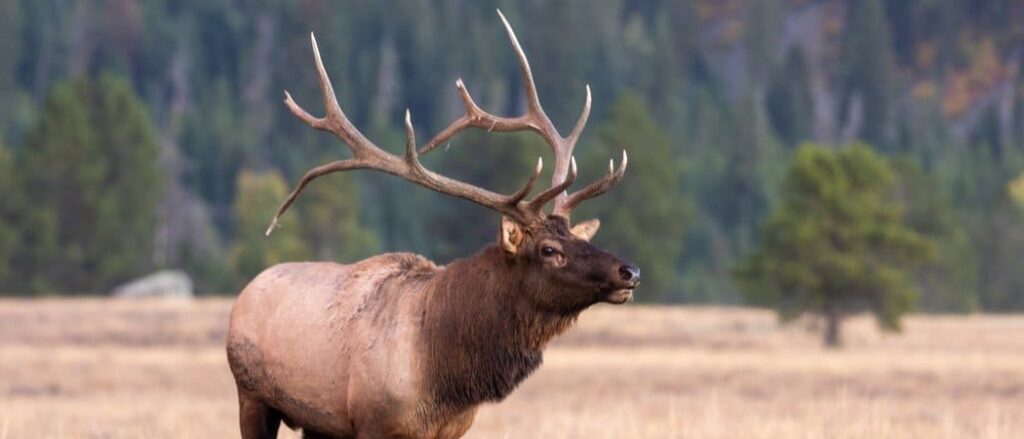
Ecologists measure ecosystem health by assessing the elk population.
©twildlife/Shutterstock.com
Elk are used by ecologists as a barometer to assess the overall health of the ecosystems in the area. They contribute to plant life by herbivory and the dispersion of seeds, to the formation of wallows, and serve as both prey and carrion for a diverse range of other animals. Wallows are a crucial part of plant life.
Elk were prized for their meat, fur, teeth, skins, and antlers by both the earliest immigrants who came to this country and the local people who lived here. Multiple reasons, including hunting, tourism, and the commercial sale of elk meat and other items, have contributed to the contemporary elk’s great economic significance. These factors include the commercial sale of elk meat.
If Elk Were To Become Extinct, What Would Happen?
If elk were to become extinct entirely, one of the most immediate and visible repercussions would be that they would no longer play a part in the food web. Also, other species that compete with elk for food would overpopulate. This would result in an oversupply of organisms that could not live for as long since there would be a reduction in the amount of food available to them.
Thank you for reading! Have some feedback for us? Contact the AZ Animals editorial team.





